ADDING SOYBEANS. While the Jacksons have primarily grown continuous corn over the years, they’ve put a few hundred acres of soybeans in the mix due to low corn prices. Jerry Jackson says he normally sees a good yield bump in the corn that follows soybeans, but in the past year, it performed as well as continuous corn did.
In northern Illinois, no-till isn’t a terribly common sight, and Jerry Jackson doesn’t understand why.
He just finished his 26th year of no-till and says it’s the best decision he ever made.
“I don’t know why more farmers don’t do it,” the Byron, Ill., no-tiller says. “It doesn’t make any sense to me why they’ve got all that big equipment. I know their yields aren’t better than ours.”
His journey to adopting no-till began in the late 1980s, when he realized a change in management was necessary. His father was in poor health and his son, Jeff, who now helps him with the farm’s fertility, herbicide and cover crop programs, was in college at the time. Jerry knew he didn’t have the manpower to do what he wanted to do, and suspected no-till was the right path.
So he attended a couple of meetings at early no-till adopter Jim Kinsella’s farm in Lexington, Ill. Afterward, Jerry decided in 1990 to sell all of his tillage equipment and commit fully to no-till.
“I didn’t try it first, I said ‘I’m going to make it work,’” he recalls. “And it did work. We never took a setback in yield, it just took a little bit more to improve yields. It was a slow period to get a yield increase, but we didn’t realize any deficit.”
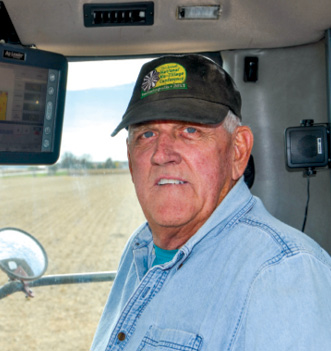
|
| COMMITTED TO NO-TILL. Jerry Jackson sold his tillage equipment 26 years ago and never looked back. |
Clearing Residue
Adopting no-till did require some management changes, particularly with residue.
Jerry says row cleaners weren’t around in the early 1990s, so when he got hit with rain that first planting season, he went in his shop and made four different kinds of row cleaners.
“It was obvious you had to clean your rows,” he says.
The four he created worked OK, but it wasn’t very long before better row cleaners were available commercially and he eventually went to those.
Today, Jerry uses Martin row cleaners with Precision Planting’s CleanSweep system, which he considers to be one of the best attachments he’s put on the planter. He says he uses them more to lift the row cleaners than put down pressure on them, because he doesn’t want them to be too aggressive and move dirt.
“It’s a little pricey getting all that stuff on there, but when you don’t have all that other equipment, you can justify spending more on your planter,” he says.
Jerry found CleanSweep to be a good enough investment that he also added them to what he calls a “strip bar” — an old 16-row, 40-foot Case IH planter he converted into a machine that pre-cleans corn residue in the rows while putting fertilizer down.
Jerry makes this pass a week to 10 days before planting, finding that moving the residue lets his planter go through the field easier, while also helping warm up and dry out the soil a little faster without disturbing it.
One problem he’s had is residue moving back into the row after he’s made this pass.
“It’s always so windy in the spring, as soon as we get the row cleaned it blows in again,” Jerry says.
To resolve that issue, he’s working on building a roller that goes right behind the strip bar, which he hopes will smash the cornstalks down and keep them from blowing.
High Residue Builds
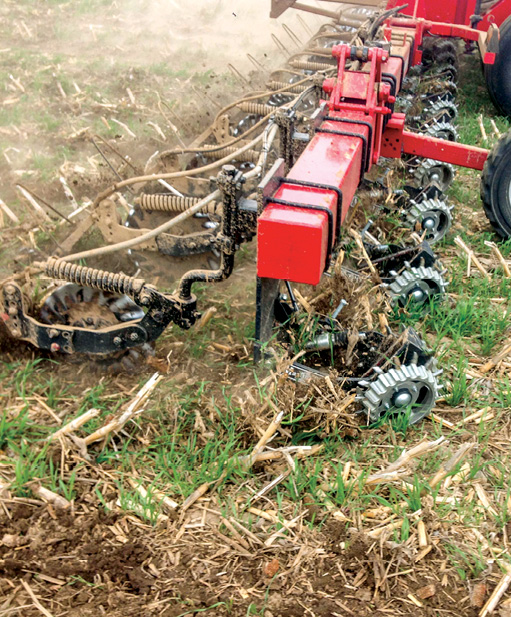
|
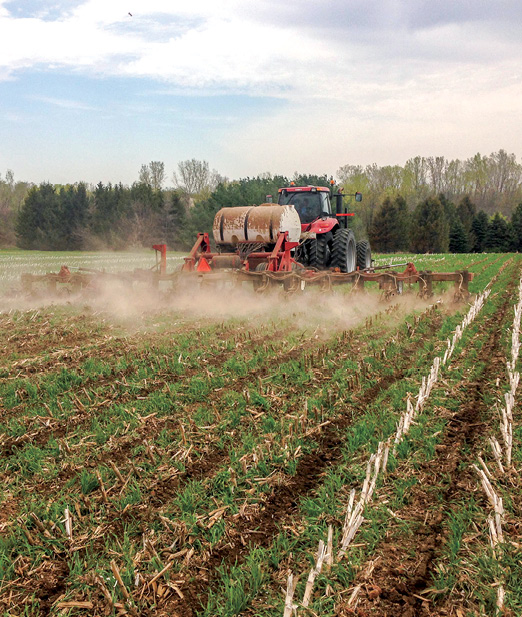
|
| CLEAR THE WAY. Jerry Jackson stripped down an old IH planter and converted it into his strip bar, which he uses to clear residue, warm up the soil and apply fertilizer a week to 10 days before planting. | |
Getting the rows cleared is especially important for the Jacksons because most of their 1,500 acres are in corn.
Jerry prefers corn to soybeans because he’s had more success with the crop and it produces more organic matter for his soils, noting that he had trouble getting good moisture in August for soybeans, which affects their yields.
“You can’t build organic matter with soybean residue,” he says. “There’s just not enough there.”
Jerry estimates they’ve increased organic matter by at least 1.5% on most of their fields, although he doesn’t have an exact number.
“It’s a little pricey getting Precision Planting on there, but when you don’t have all that other equipment, you can justify spending more on your planter…” — Jerry Jackson
He doesn’t need exact numbers, though, to know that more than 25 years of no-till has had a positive effect on his soil health.
“We just see a terrific difference in the way the soil is,” he says. “We have a better water-holding capacity and it’s so mellow.”
While Jerry has been growing some soybeans lately as a result of low corn prices, he wouldn’t mind going back to continuous corn. Normally he sees a yield bump in the corn that follows soybeans vs. corn after corn, but the past several seasons he didn’t think yield differences were high enough.
“With soybean prices down, I think with the better yields on corn we probably wouldn’t have gained anything by rotation,” he says.
Planter Upgrades
Jerry plants corn with a Case IH 1200 planter with Martin row cleaners and closing wheels and no-till coulters.
He added coulters due to problems he was having with opening discs — rivets were breaking off the hubs, or bearings would get knocked out. His theory for this happening is because he’s planting deeper than previously at 2-2½ inches.
The coulters are narrow but slice the soil open and loosen it up so it doesn’t wear on the blades as much, he says.
“Since then, Case IH has come out with better blades, but I still think making a cut through there is a good idea,” Jerry says. “It also gives me more constant seeding depth.”
In addition to the CleanSweep system, Jerry’s planter has been upgraded with Precision Planting’s vSet seed meters and vDrives — electric drives that provide row-by-row control. With this technology, Jerry feels his older planter performs just as well as newer models.
He doesn’t use variable-rate seeding much — most of his corn acres are planted with a population of 34,000. But on some of his better soils he’ll increase it.
“We don’t change it more than 5,000 plants per acre from low to high,” he says.
Jerry has been reading about other growers planting all of their corn at 36,000 plants per acre, which he thinks may be a little high on 30-inch rows, but he’s considering moving toward that higher rate on a few check strips to see how they perform.
The Jacksons are also considering adding a new row-by-row fertilizer monitor made by Ag Express. Jeff says the company’s SFA32 flow monitor uses small flow meters for each row to monitor any fluctuation between rows or in overall gallons per acre.
“We don’t always feel we’re getting an even flow from one row to the next,” Jerry says. “I use Wilger monitors on there, but they don’t really tell you for sure what you’re doing. So if you get 8 gallons on one row, and the next row’s only getting 4 for some reason, then you’re not doing a very even job.”
Nourishing Corn
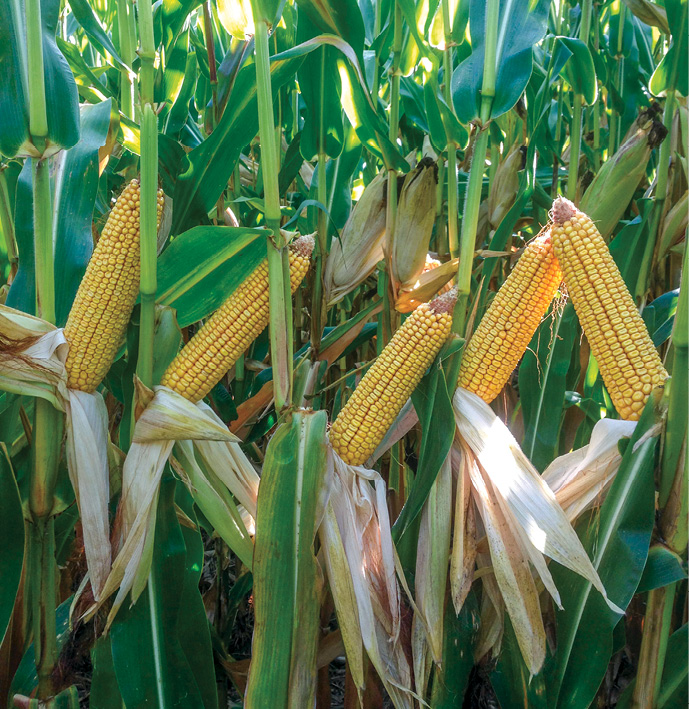
|
| HEALTHY EARS. With a good fertility program that provides adequate nitrogen and good residue management, the Jacksons haven’t run into any insect or disease issues with their continuous corn. |
Primarily using AgroLiquid (formerly Agro-Culture Liquid Fertilizers) products, the Jacksons’ fertilizer program begins with the strip-bar pass, where Jerry applies 80 units of nitrogen (N) with High NRG-9, a stabilized UAN solution, 39 units of phosphorus (P) with Pro-Germinator, and S-Calate, which provides 8 units of sulfur and 7 units of calcium, through a tube that drops fertilizer in the row directly behind the row cleaner on the strip bar.
At planting, he applies in-furrow another 39 units of P with Pro-Germinator and 39 units of potassium (K) with Sure-K.
He also puts down eNhance, a sulfur-and-chlorophyll-building package that’s also used as a N stabilizer; Micro 500, a balanced micronutrient package of boron, copper, iron, manganese and zinc; and Micro AZ, a corn inoculant that fixes N and promotes rooting and plant health.
The in-furrow application is low in salt, so the seed can drop right on the fertilizer without any adverse effects.
Finally, he sidedresses the corn between V2 and V6 with 80-120 units of N with 32% UAN stabilized with eNhance, 39 units of K and some sulfur with Kalibrate.
Jerry admits he’s not wild about sidedressing because he doesn’t like going over the corn, but he knows that it pays to do it.
“We had one year where the corn was a little big, it was already starting its rapid growth stage, so anything we broke off from the sidedress bar was done,” he explains. “This last year we went out a little early and I didn’t see near the damage of the sidedress bar.
“Of course, you’d like to get it on as late as you can, too.”
Jerry used to make his sidedress application by using drops on his sprayer, but he didn’t like that it was surface-applied. He’s considering alternatives to sidedressing that will allow him to apply N later, such as using a slow-release product like encapsulated N. He may do some check strips with it this next season.
“But I’m convinced that you have to get it in the ground,” Jerry says, explaining that method puts nutrients right where the plant needs it and it’s not as susceptible to loss.
The Jacksons try to apply sulfur with every application they make, partly because of high magnesium levels in their soil, a common problem in northern Illinois. In the early 1970s the family tried to mask it by applying higher levels of potash, Jerry says. That had an effect, but the real challenge has been getting it in the proper ratio with calcium.
Recently they’ve been using Gypsoil gypsum to help bring that magnesium-calcium ratio in balance.
They’ve done trials with 1 ton of Gypsoil per year over several years, but say that changing the soil chemistry can be a slow process and many of the benefits aren’t realized for a couple years.
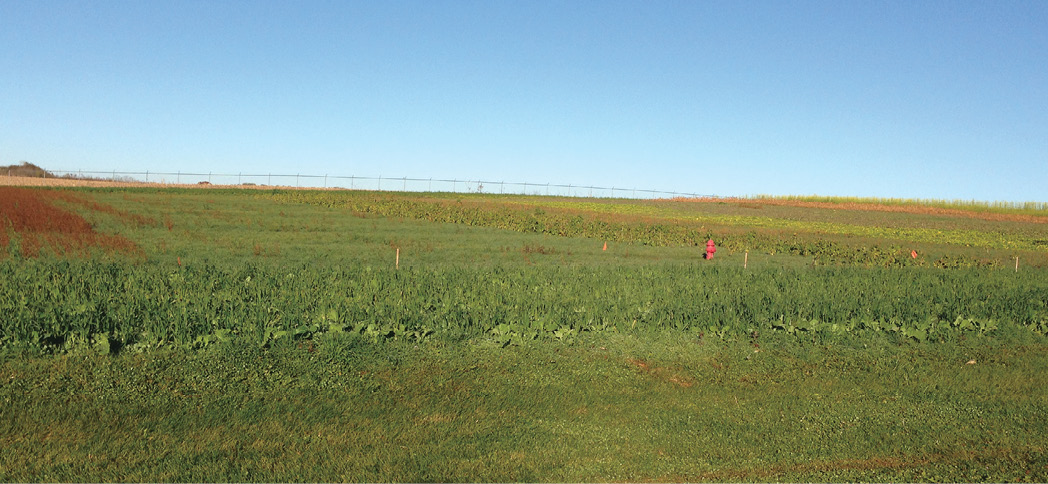
|
| NEW SPECIES. In 2014, the Jacksons seeded different species of cover crops into a few different plots. Jerry Jackson was particularly impressed that snow coverage on the plots melted faster than where there wasn’t a cover crop, which he thinks was due to the activity in the soil. Jerry was also satisfied with forage oats, due to its size and ability to withstand frost. |
Weedy Issues
A decrease in weed pressure has been one benefit the Jacksons have obtained from years of continuous no-till. Jerry says kochia used to be a big problem when he was using tillage, but that has subsided as he’s leaving weed seeds on top of the soil.
“In the winter, two of those cover crop plots melted snow off real fast. It had to be because of all the activity in the soil…”
The big challenge they’re dealing with is glyphosate-resistant marestail, particularly in soybeans. He may have to go back to corn to switch up the herbicides.
Their corn herbicide program right now is 10-12 ounces of Verdict followed by ¾ ounce of Armezon, ½ pound of atrazine and 22 ounces of Roundup PowerMax.
On their non-GMO corn acres, about 25% of their continuous corn, they apply 15 ounces of Verdict followed by ¾ ounce of Armezon and ½ pound of atrazine.
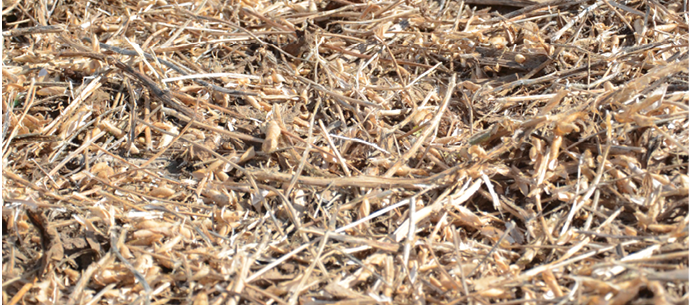
|
| NOT ENOUGH. It may look like a decent amount of residue coverage now, but Illinois no-tiller Jerry Jackson says by the time spring arrives the soybean residue will have decomposed. It’s one of the reasons why he prefers to grow continuous corn, as the heavier residue protects his soil, suppresses weeds and helps build organic matter faster than other crops. |
On their soybeans, they apply Optill PRO as a pre-emergence followed by Roundup with Powermax as a post treatment.
Jerry thinks the continuous corn is also helping with weed control, because the old corn stalks lie between the rows and suppress them. It also helps with erosion, and Jerry says they seldom see water running off their farms.
Adding Covers
The Jacksons have been experimenting with cover crops in recent years, but since Jerry seeds the covers with his soybean drill after harvest, he says it’s been hard to get anything planted other than cereal rye.
But in 2014, they got some cover crop test plots seeded, including forage oats, wild mustard, oats, crimson clover and buckwheat.
“I think making a cut with a no-till coulter is a good idea. It gives me more constant depth…”
Jerry was most impressed with the forage oats because of the size they grew to and how well they were able to withstand frost in the fall.
“In the winter, two of those plots melted snow off real fast,” he says. “It had to be because of all the activity in the soil. The soil was warmer and melted that snow coverage.”
| Go to Previous Article | Go to Next Article |

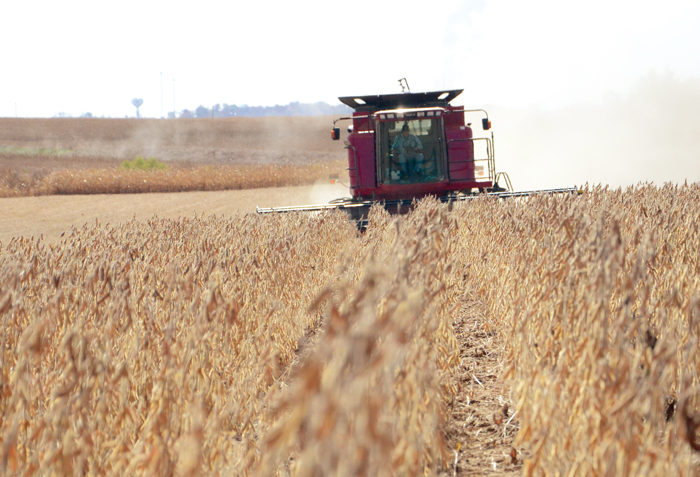






Post a comment
Report Abusive Comment